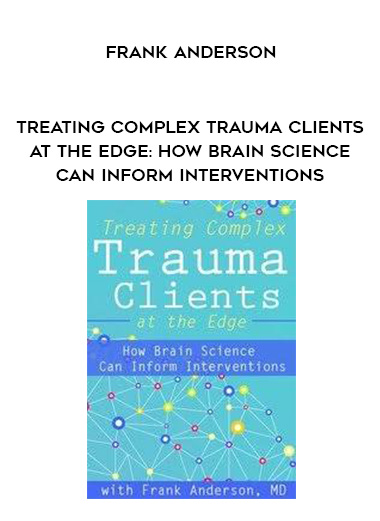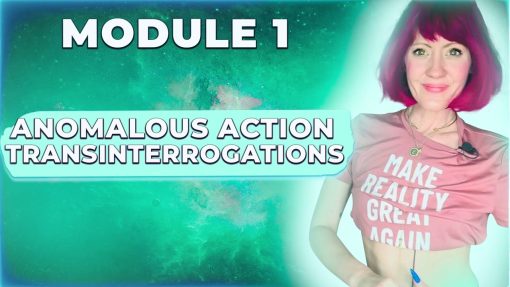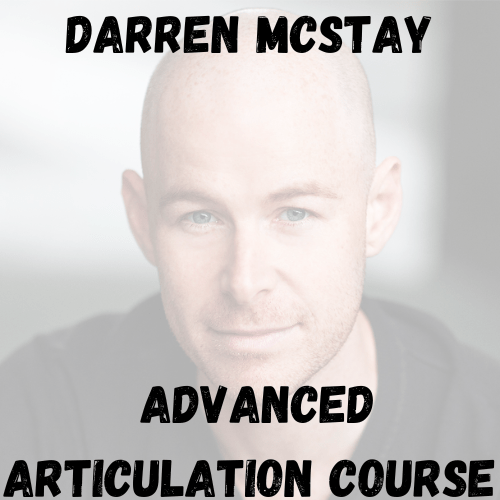[Download Now] Treating Complex Trauma Clients at the Edge: How Brain Science Can Inform Interventions – Frank Anderson
Sale page_https://catalog.pesi.com/item/31423/
Archive: https://archive.fo/VVQL0
We often get shaken and lose confidence in our approach when a client’s trauma response edges into seemingly uncontrollable dynamics of rage, panic, or suicidal desperation.
Watch Frank Anderson, colleague of Dr. Bessel van der Kolk and Dr. Richard Schwartz, as he provides an essential road map for treating relational trauma cases. Explore the neurobiological processes of hyperarousal and parasympathetic withdrawal and the underlying symptoms.
Watch now and you will also learn various therapeutic techniques and interventions that can be integrated with psychotherapy practices to help soothe your clients’ trauma
- Evaluate the extreme symptoms of trauma by determining if they are rooted in sympathetic activation or parasympathetic withdrawal to inform clinical treatment interventions.
- Articulate methods by which neuroscience can be interfaced with psychotherapy practices to improve clinical outcomes.
Experiential Treatments – Integrating neuroscience and psychotherapy
- Necessity of utilizing physical, emotional and relationship aspects in therapeutic intervention
Problems with traditional phase oriented treatment
- Negative evaluation of symptoms – ignoring their protective function
Internal Family Systems
- Understanding symptom presentation as positive efforts pushed to extremes
- Welcoming and integrating all parts of an individual
- Identifying intent of symptomology, importance of avoiding shaming
Redefining trauma related diagnoses and integrating overactive protective mechanisms
- Disorganized attachment
- Borderline Personality Disorder, Dissociative Identity Disorder
Therapist factors – vulnerabilities
- Impact of therapist parts acting as separately as the clients we work with
- Responding effectively to personal triggers
Symptoms of post trauma
- Hyperarousal, hyperarousal, psychic wounds
- Importance of obtaining permission before addressing psychic wounds
Experiential exercise – self-awareness, response to triggers
Mind-brain relationships
- Neuroplasticity, neural integration
- Neural networks associated with trauma
- Implicit nature of trauma memories
Autonomic nervous system
- Role of cortisol
- Sympathetic hyper-arousal
- Characteristics of extreme symptom activation and mixed states
Therapeutic responses
- Choosing compassion or empathic responses
- Providing auxiliary cognition
- Strategies to avoid contributing to hyperarousal
- Top down strategies to separate or unblend
Case presentation – example of permission seeking, direct access and unblending
Polyvagal Theory
- Dorsal and ventral branches
- Activating strategies, responding to hypo-arousal, blunting
Get Treating Complex Trauma Clients at the Edge: How Brain Science Can Inform Interventions of author Frank Anderson
Tag: Treating Complex Trauma Clients at the Edge: How Brain Science Can Inform Interventions – Frank Anderson Review. Treating Complex Trauma Clients at the Edge: How Brain Science Can Inform Interventions – Frank Anderson download. Treating Complex Trauma Clients at the Edge: How Brain Science Can Inform Interventions – Frank Anderson discount.
Delivery Method
– After your purchase, you’ll see a View your orders link which goes to the Downloads page. Here, you can download all the files associated with your order.
– Downloads are available once your payment is confirmed, we’ll also send you a download notification email separate from any transaction notification emails you receive from coursesblock.com.
– Since it is a digital copy, our suggestion is to download and save it to your hard drive. In case the link is broken for any reason, please contact us and we will resend the new download link.
– If you cannot find the download link, please don’t worry about that. We will update and notify you as soon as possible at 8:00 AM – 8:00 PM (UTC 8).
Thank You For Shopping With Us!







